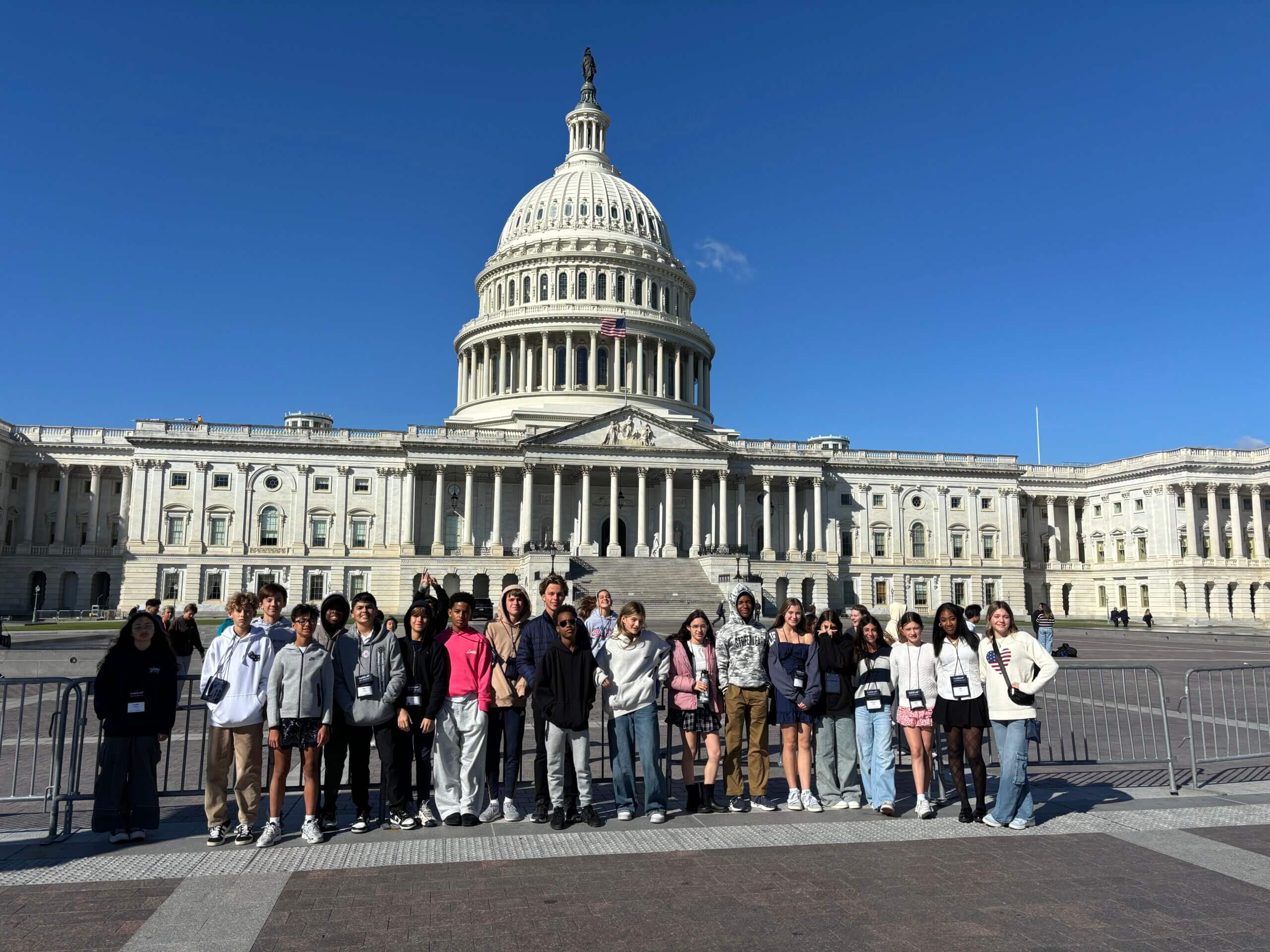
Washington D.C. 2024
– Mr. Brannan & the 8th Grade Chaperones
DAY FOUR
During dismissal for breakfast today, one of the girls’ rooms was accidentally skipped over for about 10 minutes. During our preparation for DC, they’d heard Mr. Zacuto tell a story about a group of girls who had once been skipped over for their release to breakfast and had then been showered with food and service and praise. So, they were expecting the same treatment. The difference, however, is that they still had plenty of time to eat, whereas the girls room from the example had missed breakfast entirely while being stuck waiting in their room for an entire hour. This explanation didn’t really temper their expectations, and we heard their arguments for pampering and praise for the rest of the morning.
One thing clear during dismissal this morning as well was that there was a vast disparity between the boys and girls on how they responded to our suggestion to dress it up a little on Capitol Hill day. We’d describe it here, but we invite you to explore the photos instead to see for yourself. We’ll just add here that there was an entire table at breakfast devoted to hair and makeup.
Maybe the best thing about our 14th-floor Monument Room breakfast location is when the kids ask, “Where are we going this morning?” Of course this is a question repeated roughly every three minutes.
All we have to do is point and say, “See that white dome in the distance? That’s the Capitol. We’ll be headed there.”
Before we left for Capitol Hill, however, we broke into daytime groups in order to discuss important issues affecting us today. The deliberation the kids dove into deepest centered on the issue of homelessness. Here are a few snippets from their discussions:
Gabrielle: The wellbeing of people is important for a society, which is why money should be set aside to affect the most needy.
Aryeh: Making sure the unhoused find their way to shelters is important to make sure they get the help they need.
Anna: Mental health needs to be a priority because if that doesn’t get fixed, it’s hard for someone to get a job, and not being able to afford a place to live makes it so they are in a cycle of homelessness, even if they are provided houses to begin with.
Eva: Reducing Housing Regulations is better. It doesn’t require money from the taxpayers, but it does require legislation in order to change regulation.
Ile: Basing who qualifies for free or reduced-cost housing can be dangerous because as soon as someone makes enough money, they don’t qualify anymore, but they may not be in a position to actually afford the houses where they live. Who sets the poverty line? Do they have biases? Shelters can also be dangerous places for people and families. More programs need to be in place to get people to the next step till they are actually on their feet and not abandoned when they’re just off the streets.
Ayden: It should be easier for people to get a job without a fixed address. Making it more difficult for people having a hard time anyway isn’t something that will fix things.
Zion: How do we determine when people can be independent financially or without social programs? This is a huge hurdle in how to actually fix the issue. Once people are receiving free housing, when will they not want free housing? Some people are paid more than others for the same type of job. Does getting a job then take away your free housing? There seems to be a lot of problems with rolling out fair policies for everyone, including taxpayers.
Octavio: Low-income shelters need to be spread out across cities and not just concentrated in low-income areas.
William: Providing shelters on the outskirts of the city would be less expensive and provide more space to build.
Gia U.: Unaccompanied youth is a major issue that needs to be addressed. For homeless youth without parents, they’re going to need extra help with housing and programs
Ethan: Long-term housing has the smallest amount of cons and helps people get housing for longer periods. More sustainable resources like cargo ships and other abandoned places that can be turned into affordable housing because every person deserves a home.
Violet: It was valuable being able to discuss everyone’s point of view and come to some sort of agreement in the end.
Otis: It was good that we all got to voice our opinion on it. I even had more to say than time allowed.
While we didn’t come to a consensus on what is clearly a complicated issue, it was a good exercise, particularly because our next stop was Capitol Hill where these types of deliberations happen all the time, and in the end—just like us—they also don’t reach a consensus.
We were dropped off at the bottom of the Hill near the Ulysses S. Grant Memorial where we could see the stage for the 2025 Presidential Inauguration already being constructed. We walked up the east side of the Capitol Building, stopping to take pictures along the way before taking a moment to stand outside the Supreme Court of the United States, which was in session, before visiting the Library of Congress (LoC).
The Library of Congress is the largest library in the world and serves as the research arm of the United States Congress. Founded in 1800, it contains more than 170 million items in various languages, formats, and subjects. The library is housed in three buildings, with the Thomas Jefferson Building being the most iconic, known for its architecture and ornate interiors. The Library of Congress stands as a testament to the importance of knowledge and cultural heritage in American society.
Some definite highlights included Mr. Shipley meandering around the reading room while Mateo, Andrew, Julian, Aryeh, and Zion watched him with jealousy since he got to do something they couldn’t. But the pièce de rèsistance was a new exhibit called Treasures, which included the second handwritten copy of Lincoln’s “Gettysburg Address” and the contents of his pockets at the time of his assassination (a silk handkerchief, a Confederate five dollar bill, his reading glasses, etc.).
After our visit to the LoC, we entered the Russell Senate Office Building. It seemed like most people were headed out for lunch, which is exactly why we were there. One group stopped and spoke with staffers from Calfornia Senator Laphonza Butler’s office. Fun fact: a previous occupant of Senator Butler’s office was Kamala Harris! In search of lunch, we walked down to the tunnels connecting various office buildings on the Hill to Dirksen Cafeteria. This year, we didn’t see any Congresspeople, but we did see lots of interns. We still enjoyed the food!
Our first stop after lunch was Frederick Douglass House. The journey there was a bit of a challenge for one bus. One of the drivers ended up on the wrong side of the house, and when trying to turn around, ended up in a narrow roundabout with a very sharp turn and parked cars on the street. These limitations made it difficult for the bus to turn around. There was a resident standing outside who was supportive and trying to help the bus driver make the sharp turn around the roundabout, but she did not have confidence in successfully making the turn, despite this man’s perseverance. As the bus decided to reverse down the street out of the roundabout, several residents noticed the bus and came outside to help guide us out of the roundabout, and we turned into an alley, which of course led to thunderous applause from students and faculty aboard.
Eventually, though, everyone arrived at the home, sometimes referred to as Elm House, which rests on the tallest hill in the Anacostia neighborhood of DC. Our ranger gave a thorough tour of the home and its many original pieces and artifacts from Douglass’ amazing travels and life. As awe-inspiring as this was, the students were equally interested in the stray cats wandering the grounds.
Our next stop was the National Archives, the official repository for the most important documents of the United States government. The Archives also preserve a vast collection of other historically significant documents, photographs, and records. As the keeper of the nation’s records, the National Archives play a crucial role in preserving America’s foundational documents and ensuring government transparency. In fact, that latter role will be on full display soon as they ensure the authenticity of record keeping during the certification process of the 2024 electoral college votes.
Students saw the original copies of the Declaration of Independence, the Constitution, and the Bill of Rights, which they’ve read about in their The Great American Documents, Part One reading in social studies with Mr. Brannan so far this year. Then they got to tour a few exhibits on protests, a coal country exhibit based on the photos of renowned documentary photographer Russell Lee (which was excellent!), and an exhibit on the Magna Carta and documents that influenced the American Revolution and many of the United States’ important founding documents.
Students then played a competitive game of kickball on the green of the National Mall, while others played a version of keep-away with the football. There was also some light volleyball passing, but the rest relaxed practicing jokes, the worm, making shapes out of tiny rocks, and chit chatting. Despite the cold weather, all students enjoyed running aimlessly with a brisk chill in the air. They even seemed to be disappointed to leave.
Over the course of the first few days of this trip, the kids have proven to us enough that they can handle a little freedom. So, when we arrived in Georgetown, we gave them maps, told them the boundary lines they could not cross, set a meet-up time, and released them into the wild.
All the students were delighted to have the opportunity to both shop and pick their own dinner. From makeup, athleisure, caviar, to Chipotle, and many others, students spent the money that burned their pockets and all made it to the bus on time. Surprisingly, the chaperones did not make it back on time, as their food order got delayed. They will have to eat lunch with Brad next week.
Our final stop of the evening was the WWII Memorial, which commemorates the 16 million US service members and the home front effort who contributed to Allied victory during World War II. It features 56 pillars representing US states and territories, two arches for the Atlantic and Pacific theaters, and a central fountain. The Freedom Wall displays 4,048 gold stars, each representing 100 Americans who died in the war, which was a symbolic feature many students fixated on, particularly when they realized how many people that actually represented.
And that wrapped up our night. Tomorrow, we’re headed to the US Marine Corps Memorial before spending the rest of the morning at the US Holocaust Memorial Museum. Then we’ll be having lunch at the National Museum of the American Indian before exploring several of its exhibits. We’ll then be heading to the White House and Black Lives Matter Plaza before finishing the night out with dinner and bowling. We’re off to bed!





